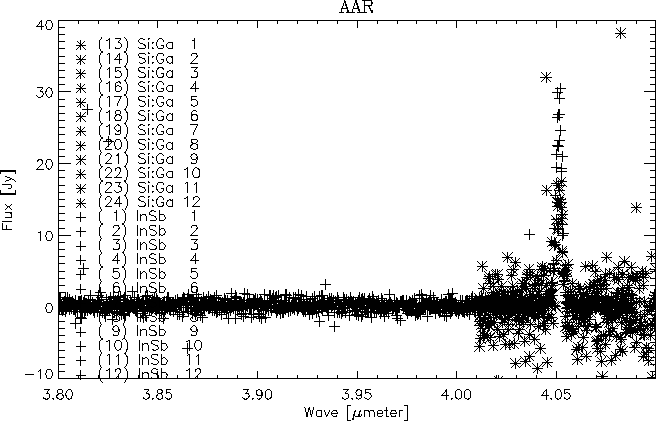
Figure 3: The 4.05 micron line in NGC6543 as seen by in bands 1e (+ symbols) and 2a (* symbols)
In the following section, we will give an overview of the RSRFs as seen in the lab versus the RSRFs as measured in orbit. From these graphs, it can be seen in which regions the RSRF calibration is more uncertain. This is mostly at some band edges. These curves help us to understand inconsistencies as in figure 3. After rebinning the spectrum shown in this figure, the continuum level in band 1e will be in agreement with band 2a, however, the line flux at 4.05 will be about 30% lower. One should keep in mind that we're talking about a continuum which is virtually zero. That means that errors in a gain correction (like dividing by RSRF or the absolute flux conversion) will be almost invisible on the continuum, but very clear in the line fluxes.
This means one has to be careful when interpreting line fluxes of spectra with a zero-continuum : if the line is in a region where the lab RSRF is different from the in-orbit RSRF, the flux of the line is less accurate. Thus in the example of NGC 6543, the line flux in band 1e has to be believed.
It should be noted that (1)these problems are less likely to occur with spectra with a high continuum because the errors in the gain correction will be applied to the continuum as well (thus the line/cont ratio will be correct) and (2)the differences in line fluxes in the example do not represent the current uncertainties of the RSRF flux calibration in that region: this observation was an early PV observation with the old AOT logic which was not fully optimised yet.

Figure 3: The 4.05 micron line in NGC6543 as seen by in bands 1e (+
symbols) and 2a (* symbols)